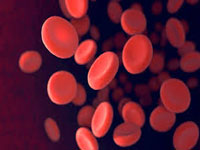Blood money
This year marks the 200th anniversary of the first successful human-to-human blood transfusion, conducted by James Blundell, an English obstetrician working just across the Thames from The Economist’s
This year marks the 200th anniversary of the first successful human-to-human blood transfusion, conducted by James Blundell, an English obstetrician working just across the Thames from The Economist’s
<p>Enteric fever continues to be a major cause of mortality and morbidity globally, particularly in poor resource settings. Lack of rapid diagnostic assays is a major driving factor for the empirical treatment
An ingenious drone delivery service known as “Uber for blood” has slashed the delivery time of life-saving medicine to remote regions of Rwanda from four hours to an average of half an hour. A partnership
<p>Nucleic acid amplification testing (NAT) is restricted to a few blood banks in India since 2008. This review was directed toward understanding NAT yield in different parts of the country and prevalence

An investigation by DNA found that the blood cell separator machine at Guru Teg Bahadur (GTB) hospital, is old and breaks down most of the time. As the city prepares for more showers in the coming week,
<p>Designing biologically inspired nanoscale molecular assembly with desired functionality is a challenging endeavour. Here we report the designing of fbrin-inspired nanostructured peptide based sealants
An inexpensive and widely available drug could save the lives of one in three mothers who would otherwise bleed to death after childbirth, a study published in The Lancet has revealed. According to
A cheap and widely available drug could save the lives of one in three of the 100,000 new mothers who bleed to death after childbirth every year, mostly in poorer countries, according to the first study
For the first time a “tipping point” molecular link between the blood sugar glucose and Alzheimer’s disease has been established by scientists, who have shown that excess glucose damages a vital enzyme
<p>Though the blood transfusion is lifesaving, it is never risk free and carries potential risk for transfusion transmitted infections (TTIs).The objective of present study is to assess the prevalence